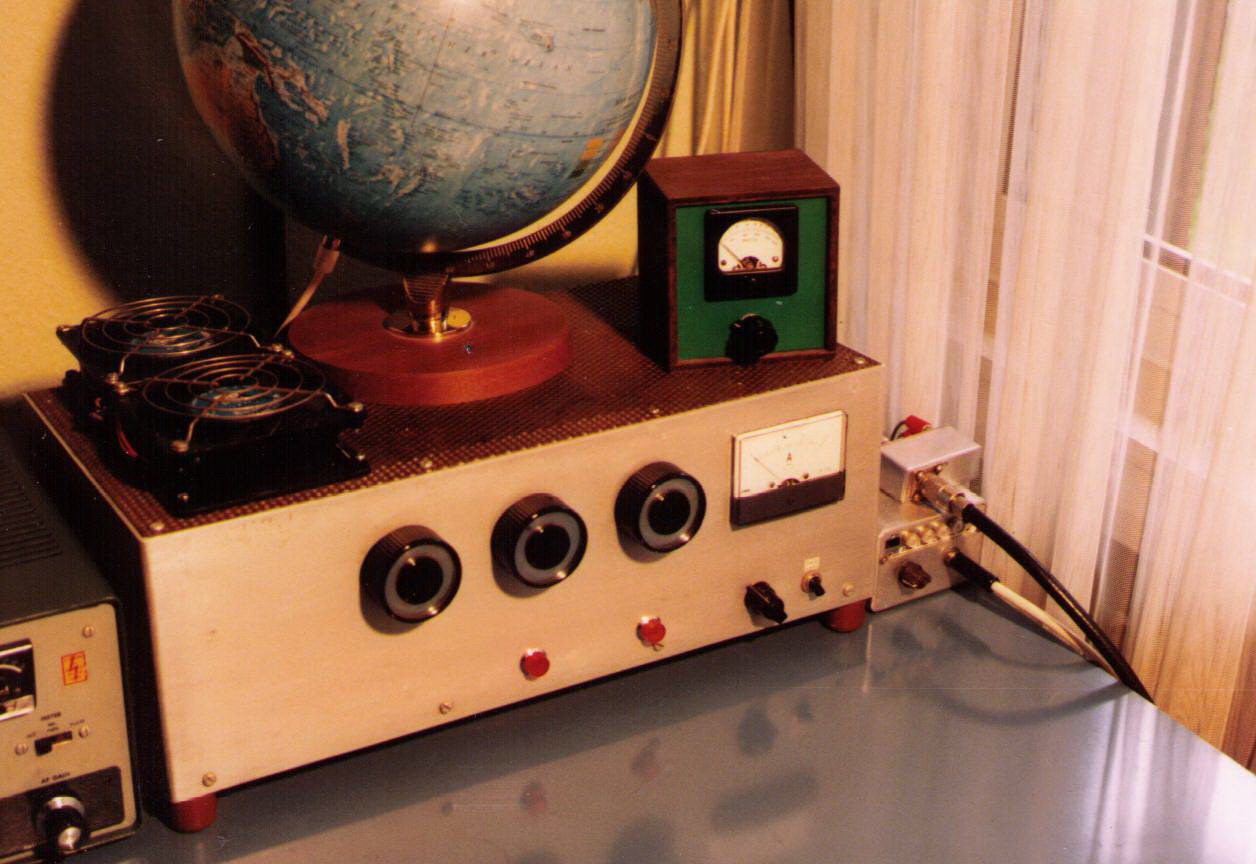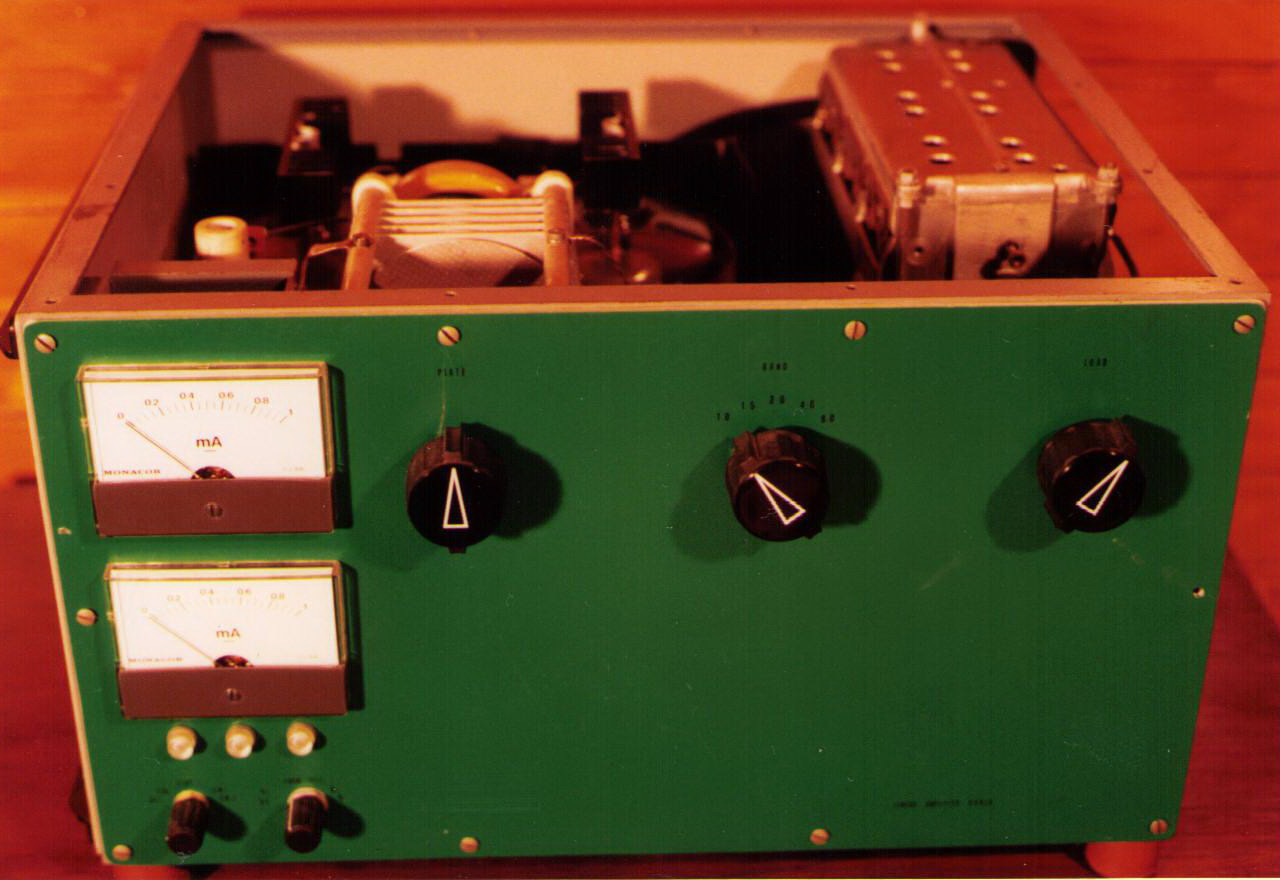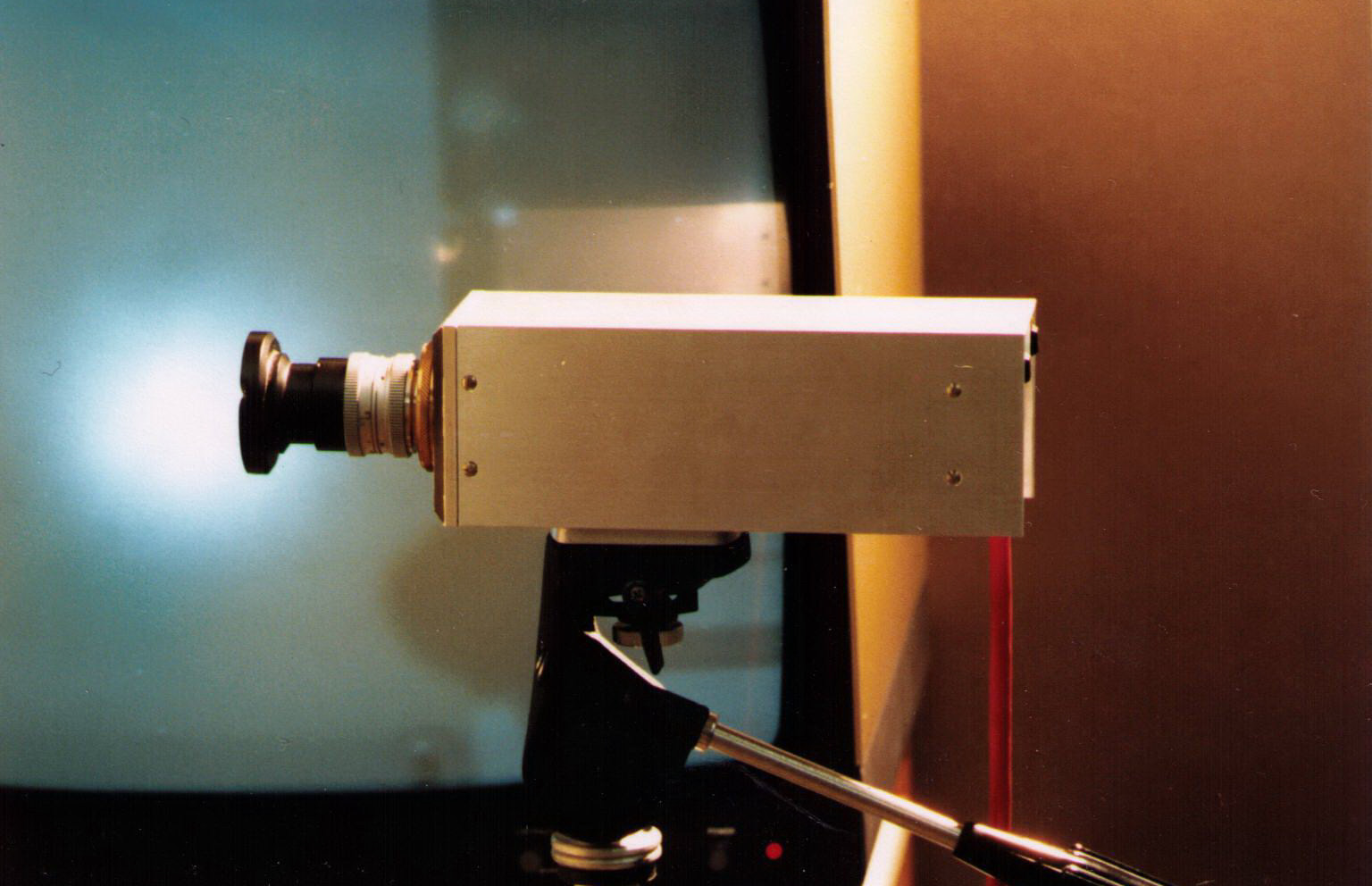
Older Projects
by Joerg Schulze-Clewing
Here is the very first RF power amp I built as a teenager. It is a 3MHz-30MHz common-cathode tuned amplifier around five PL509 pentodes. These are officially rated at 30W plate dissipation each which added up nicely to the 150W max that the German ham radio license class of the olden days allowed:

When driven at 80W it delivers about 1200W at 3.5MHz and towards 30MHz that drops to about 800W. You could squeeze more out of it but at some point the breaker of the mains circuit it was connected to would trip. The little box on top is a wattmeter for forward and reflected power, 200W and 2000W ranges. I spent hours polishing its home-made wooden enclosure. The coupler can be seen to the right of the amplifier.
The next picture shows my next amplifier which I built after that strange 150W plate dissipation rules was dropped and 750W maximum output became the law. This made a lot more sense as we didn't have to squeeze lots of power out of tubes that were way too small. Ok, this new amp contains two QB5/1750 tubes which are really oversized but it can deliver 750W into pretty much any load for hours. The power supply is the same size. Plate voltage is about 5000V. Some day when I retire I want to bring these mothballed amps back to life but I am afraid that their days may be numbered. I bet we'll soon have cheap MOSFETs available that deliver power at the legal limits much more efficiently.

Below is the CCD camera I built as a masters project. It also has a VME interface board. The two buttons in the back control the acquisition sequence of the VME system. This was in the mid 80's when most CCD cameras were of poor design and if you wanted a really good one you had to either plunk down a ton of money or design your own. And you had to really design it from scratch. Processing of the image happened on a 68000 processor, a far cry from a Pentium Dual-Core but hey, it worked and it was all we had back then.
